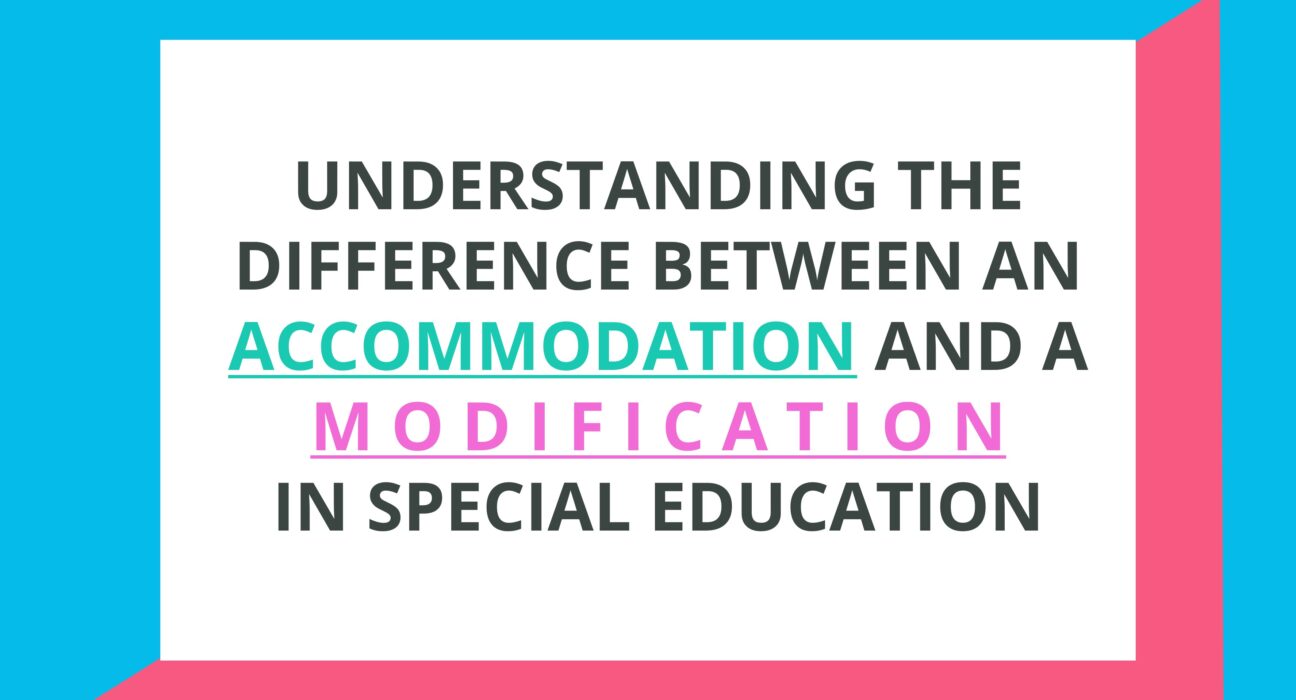In the field of education, particularly special education, it is crucial to understand the distinctions between an accommodation and a modification. These two terms are often used interchangeably, but they have very different meanings and implications for teachers, parents, and most importantly, students. This article aims to clarify these concepts to help create an inclusive and supportive learning environment tailored to each student’s needs.
Table of Contents
What is an Accommodation?
An accommodation is an adjustment made to the learning environment, tools, or teaching methods to allow a student to access the same educational program as their peers without altering the academic expectations. Accommodations do not change the content being taught or the criteria used to assess the student. They are designed to remove barriers and provide equitable access to education.
Examples of Accommodations:
- Extended Time: Allowing a student more time to complete a test or assignment.
- Visual Supports: Using charts, graphs, or other visual aids to assist understanding.
- Assistive Technology: Providing tools like text-to-speech software or adapted keyboards.
- Quiet Environment: Offering a distraction-free workspace to help with focus.
What is a Modification?
A modification, on the other hand, involves a change in what is being taught or the expectations for student performance. Modifications are made for students who need to follow a different educational program than their peers due to their abilities or specific needs. Unlike accommodations, modifications alter the nature of the academic content and expectations.
Examples of Modifications:
- Adjusted Difficulty: Simplifying tasks or tests to match the student’s level of understanding.
- Reduced Workload: Assigning fewer tasks or problems.
- Alternative Assessments: Using projects or presentations instead of standard written tests.
Why is the Difference Important?
Understanding the difference between accommodations and modifications is critical for several reasons:
- Equity: Accommodations ensure that all students have equitable access to the standard educational program without lowering academic expectations.
- Adaptation: Modifications adapt the educational program to the abilities and specific needs of certain students, ensuring their participation and progress.
- IEP Planning: In the context of an Individualized Education Program (IEP), it is essential to determine whether a student needs accommodations, modifications, or both, to achieve their educational goals.
How to Determine a Student’s Needs?
Determining a student’s needs for accommodations or modifications typically involves a multidisciplinary team that includes teachers, parents, and other education professionals. This team assesses the student’s abilities, academic performance, and specific needs to develop an individualized plan.
Steps to Determine Needs:
- Initial Assessment: Conduct a comprehensive evaluation of the student’s abilities and needs.
- Team Meetings: Discuss the assessment results and observations as a team.
- Plan Development: Decide on the necessary accommodations and/or modifications and include them in the IEP.
- Monitoring and Revision: Continuously monitor the student’s progress and adjust the plan as needed.
Conclusion
In summary, accommodations and modifications play distinct yet complementary roles in educating students with special needs. Accommodations enable these students to access the same academic content as their peers, while modifications adjust the content to suit their unique abilities. Understanding and correctly applying these concepts is essential for creating an inclusive and equitable learning environment where every student has the opportunity to succeed.
As educators, it is our responsibility to ensure that we effectively and appropriately use these strategies to support all our students on their educational journey.






